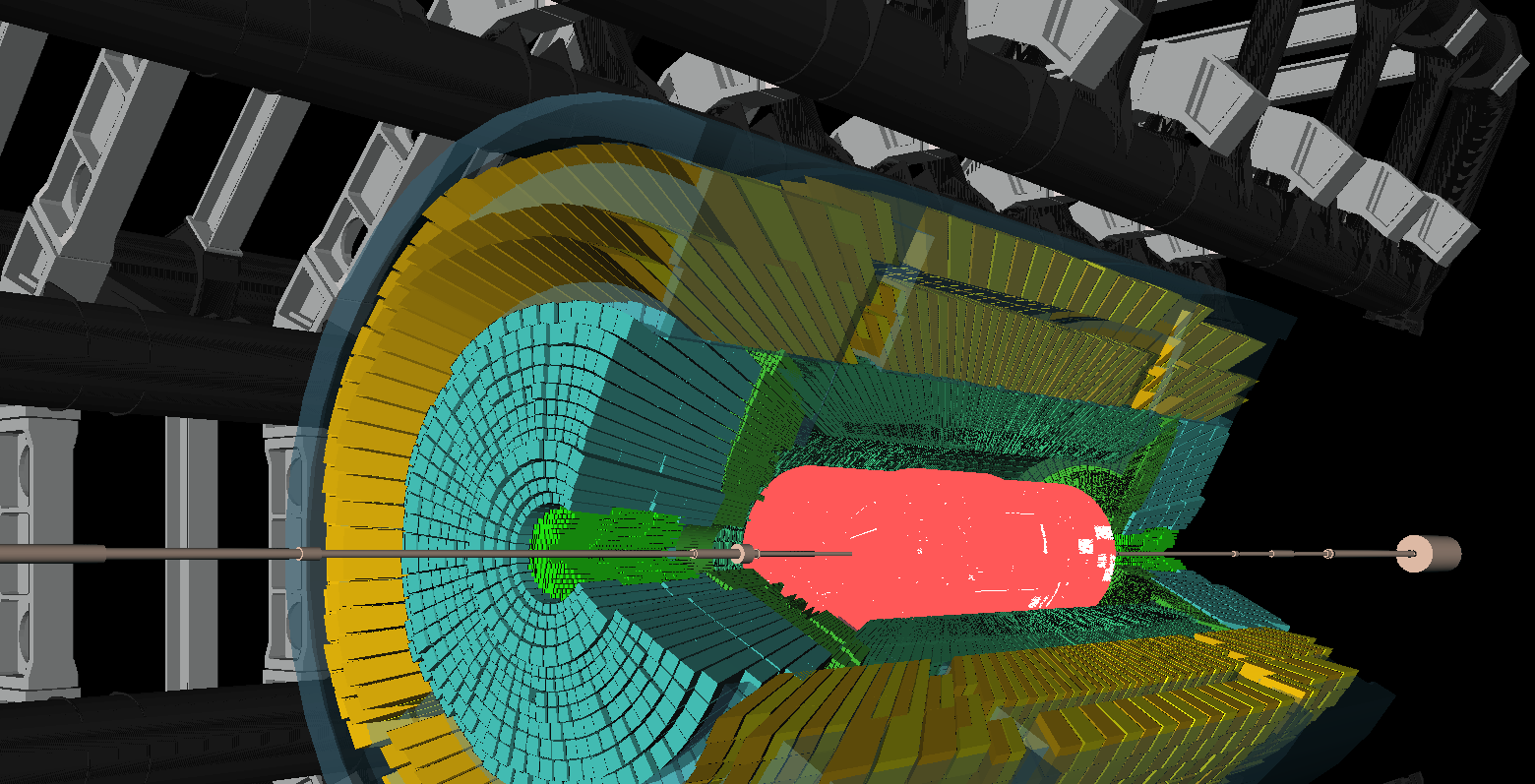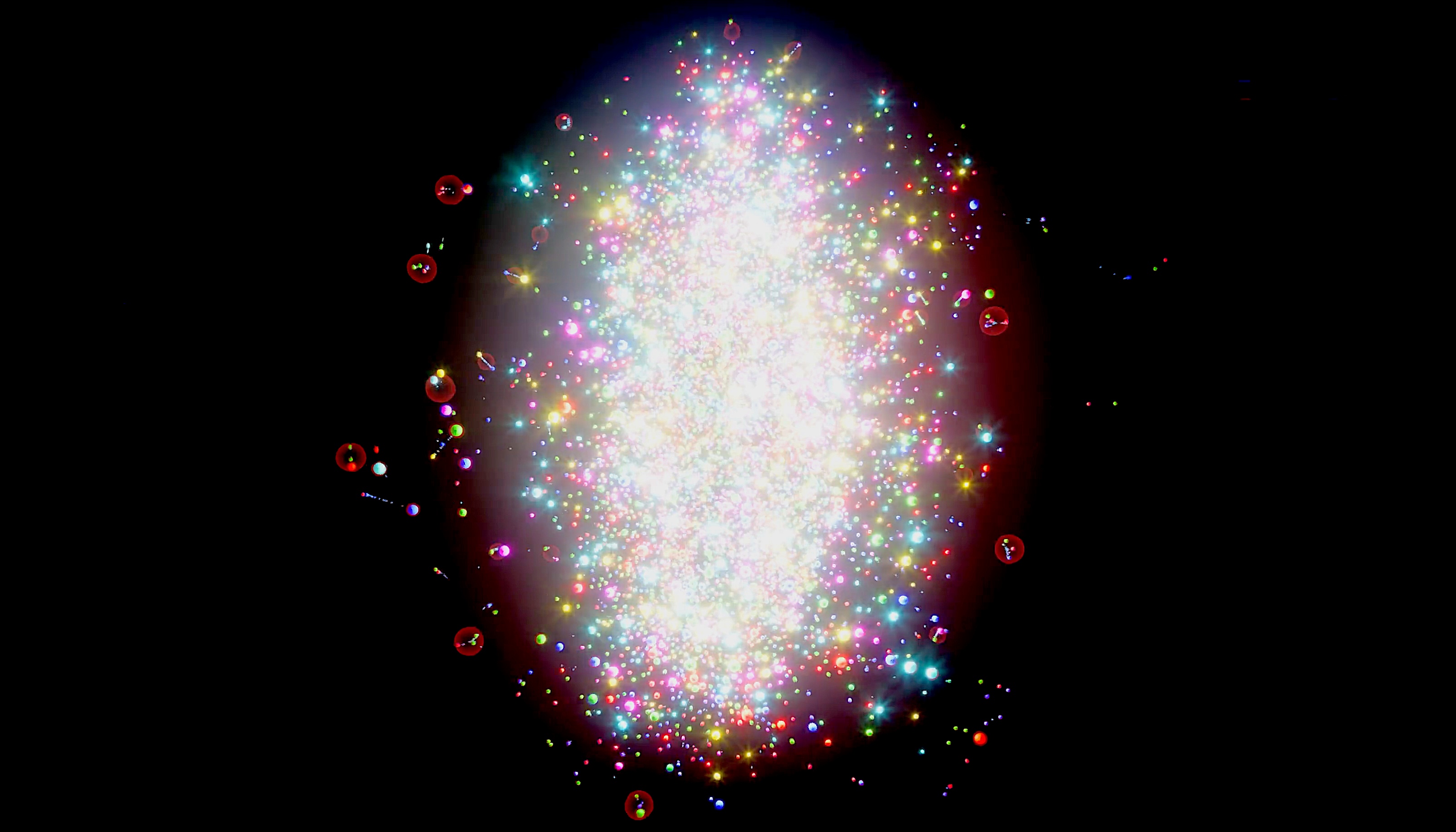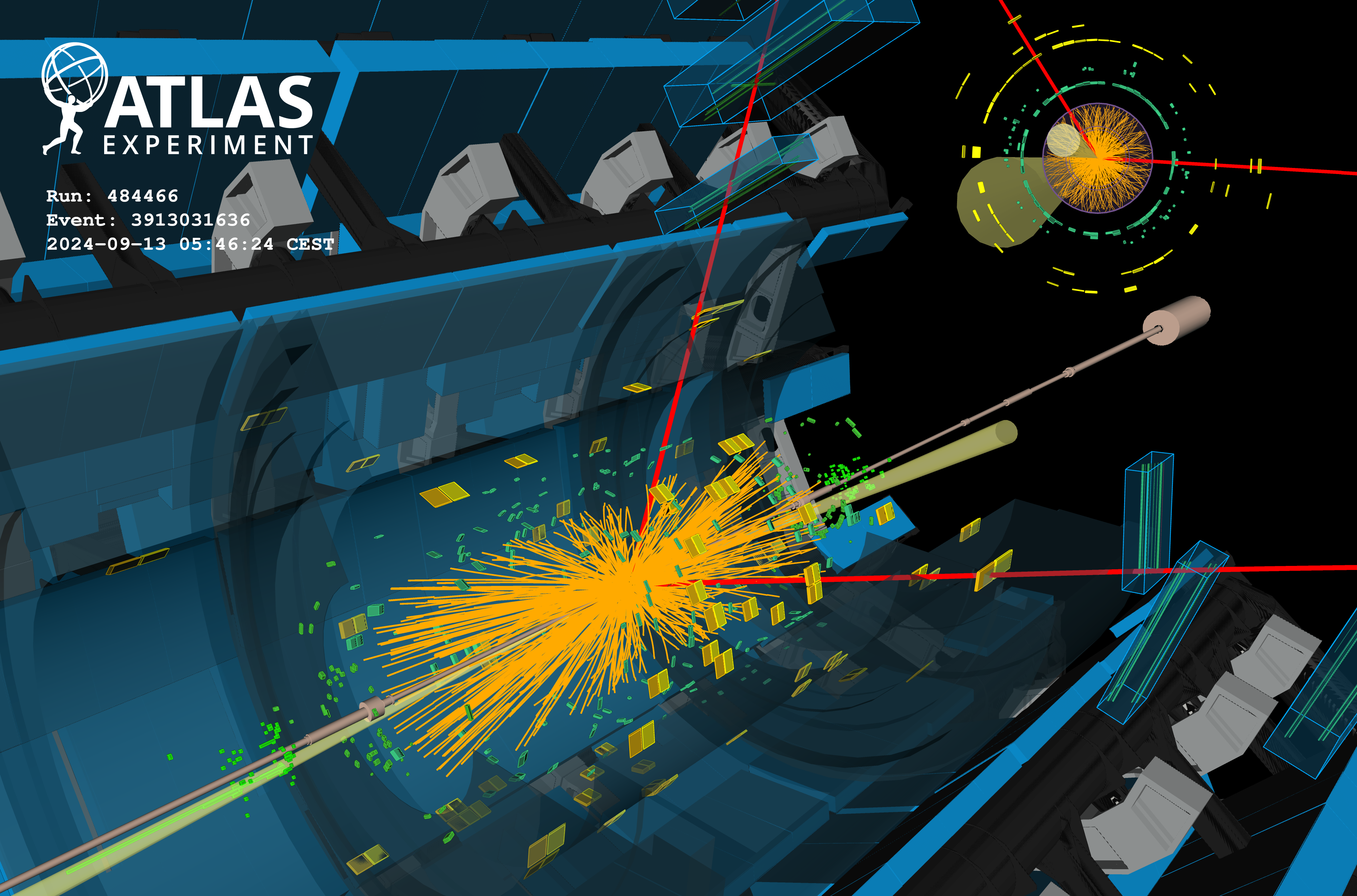Countdown to physics: Beams splash in the ATLAS experiment
28 April 2022 | By
After over three years of upgrade and maintenance work, proton beams are back in the Large Hadron Collider! Friday 22 April 2022 marked the start of the LHC’s third operation period (Run 3), which will see a record number of collisions in the ATLAS detector.
But data-taking for physics analyses won’t be starting just yet – LHC operators first need to recommission the accelerator and safely ramp up the energy and intensity of the beams. The first collisions for physics are expected this summer, and will be at a record energy of 13.6 TeV. Until then, it is “beam splash” season in the ATLAS experiment.
Beam splashes are the first and simplest type of particle collisions created by the LHC. They arise as a single proton beam hits a collimator placed in the beamline just ahead of the ATLAS detector. Like a giant wave striking the shore, the beam sprays out a stream of particles (mostly muons and hadrons) into the experiment ahead. Splashes are used by the experiments to test their numerous sub-detectors and to synchronise them with the LHC clock.
Today, the LHC had a dedicated run to create beam splashes at both the ATLAS and CMS experiments. Though ATLAS saw its first “parasitic” beam splashes on Friday 22 April, today’s splashes allowed for more detailed commissioning procedures to take place.
Just like a wave, the beams splashing into ATLAS reach one side of the experiment before the other. As this small difference in timing is important to ATLAS’ calibration, today’s beams were splashed from both sides of the detector (“A” and “C”).
The event displays shown here paint a special picture of the ATLAS experiment. Unlike those used in physics analyses, these events “light up” every part of the experiment. By studying these displays, ATLAS physicists can immediately spot if their sub-detectors are working and confirm the validity of the data taking.
This is an important step in the data workflow, preparing ATLAS to record first-physics collisions this summer. The wait is almost over!
Discover more
- See more event displays from Friday 22 April, Thursday 28 April and Saturday 7 May 2022 beam tests.
- Learn more about beam splashes in ATLAS in Riccardo Maria Bianchi’s blog post: Waiting for physics: Splashing beams.
- Explore all Run 3 event displays from beam splashes and collision data.
This article, originally published on 28 April 2022, was updated on 7 May 2022 to feature new event displays from beam splash tests carried out 7 May 2022.








